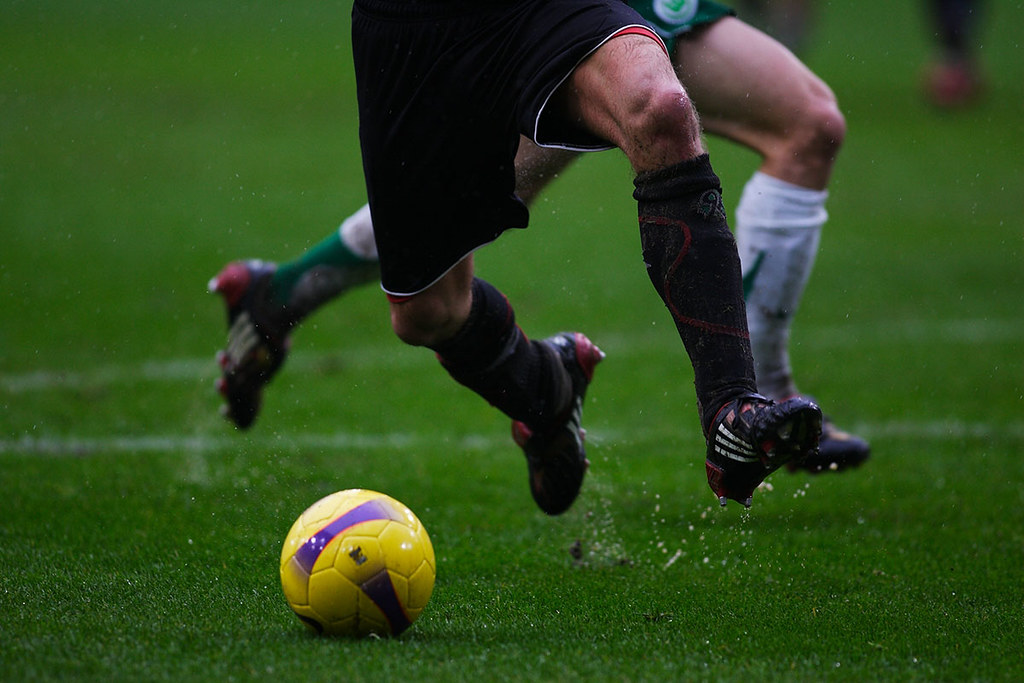Featured
Football comes back – with a tech twist
The world’s football leagues have been on hold for three months, but technology is helping soccer come back, writes ARTHUR GOLDSTUCK
Share
- Click to share on X (Opens in new window) X
- Click to share on Facebook (Opens in new window) Facebook
- Click to share on LinkedIn (Opens in new window) LinkedIn
- Click to email a link to a friend (Opens in new window) Email
- Click to share on Reddit (Opens in new window) Reddit
- Click to share on WhatsApp (Opens in new window) WhatsApp
- Click to share on Pinterest (Opens in new window) Pinterest
It was a triumphant declaration: “LaLiga is coming back,” said Marcos Pelegrin, country managing director of the Spanish football league in South Africa, running one of the organisation’s network of international offices. But it wasn’t just for the sake of soccer that he was so upbeat.
“It’s really good news not only because football is going be back, but because it’s a sign of normality, of society getting a little bit out of this crisis,” he said in a briefing to African media last week.
LaLiga restarted its season last Thursday, setting the scene for 39 days of non-stop football, with matches every day until 19 July. But in-depth preparations have been under way for some time, in six phases, which would provide a useful template for South Africa’s Premier Soccer League. The phases moved from preparation for training, training alone, training in groups, and collective training, to the start of LaLiga, and the conclusion of the season.
“LaLiga has been working on securing, first of all, the health of our players and the staff of the clubs and also the return of the competition because there there’s a lot at stake, it’s a big industry, with a revenue stream that represents 1.37% of Spanish GDP, employs nearly 200,000 people in the country, and pays 4-billion Euros in taxes every year.”
It is no surprise, then, that LaLiga invested heavily in technology to help with preparations, especially from the second phase onward.
“Everyone received individual training sessions for every day, the night before, on their computers and tablets, with detailed instructions of the timing that they could go to the facilities. In stage three every club had a roster in which players were separated into different groups that were able to train together. They got different times to go to different places to train, and different exercises to perform.”
Thanks to strict social distancing and sanitisation protocols, not a single players had been infected by COVID-19 b the time LaLiga restarted – despite 2,500 tests. Matches are being held behind closed doors, stadiums are divided into security zones, movement is regulated, kits are changed at half-time, and non-players all wear masks and gloves.
Pelegrin acknowledges that this is not ideal for fans or the media, but this is where technology lends a hand.
“We’ve been working on several technological solutions in order to make the product more appealing,” he said.
In a statement last week, the Spanish league announced that matches in its two main divisions, LaLiga Santander and LaLiga SmartBank matches, “will look and sound different”. The main innovations are virtualisation of stands and fan audio, along with new camera positions. Both are being implemented by Mediapro, LaLiga’s official production partner.
“We have made these broadcasting changes so fans can enjoy LaLiga,” said LaLiga President Javier Tebas. “We work with global partners to offer a great viewer experience. We are in an exceptional situation, but for us it has been important to be able to adapt and offer a compelling, cutting-edge broadcast to our fans.”
Visit the next page to read about how LaLiga has adapted with virtualised technology.
Share
- Click to share on X (Opens in new window) X
- Click to share on Facebook (Opens in new window) Facebook
- Click to share on LinkedIn (Opens in new window) LinkedIn
- Click to email a link to a friend (Opens in new window) Email
- Click to share on Reddit (Opens in new window) Reddit
- Click to share on WhatsApp (Opens in new window) WhatsApp
- Click to share on Pinterest (Opens in new window) Pinterest
| Thank you for Signing Up |



















